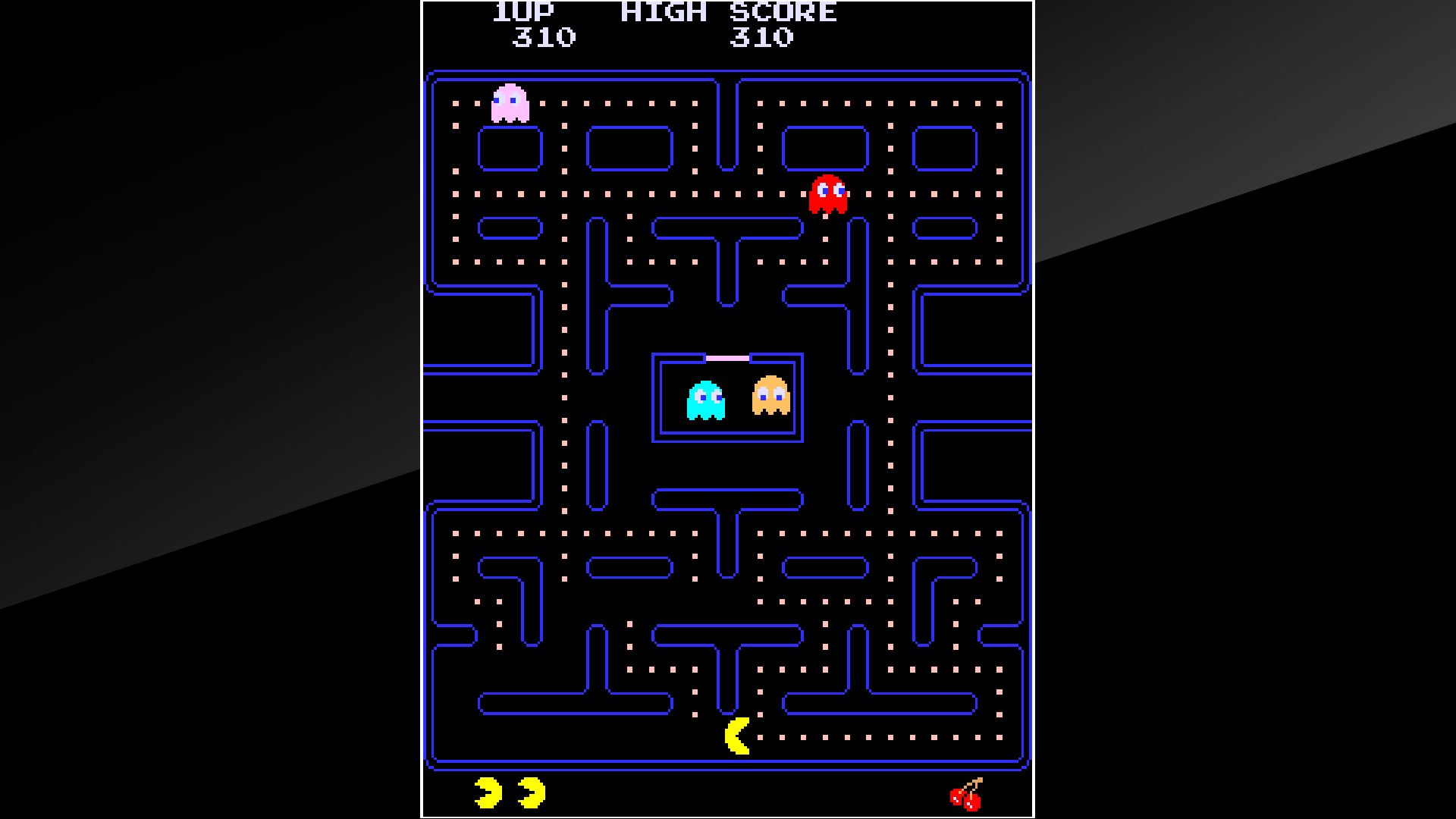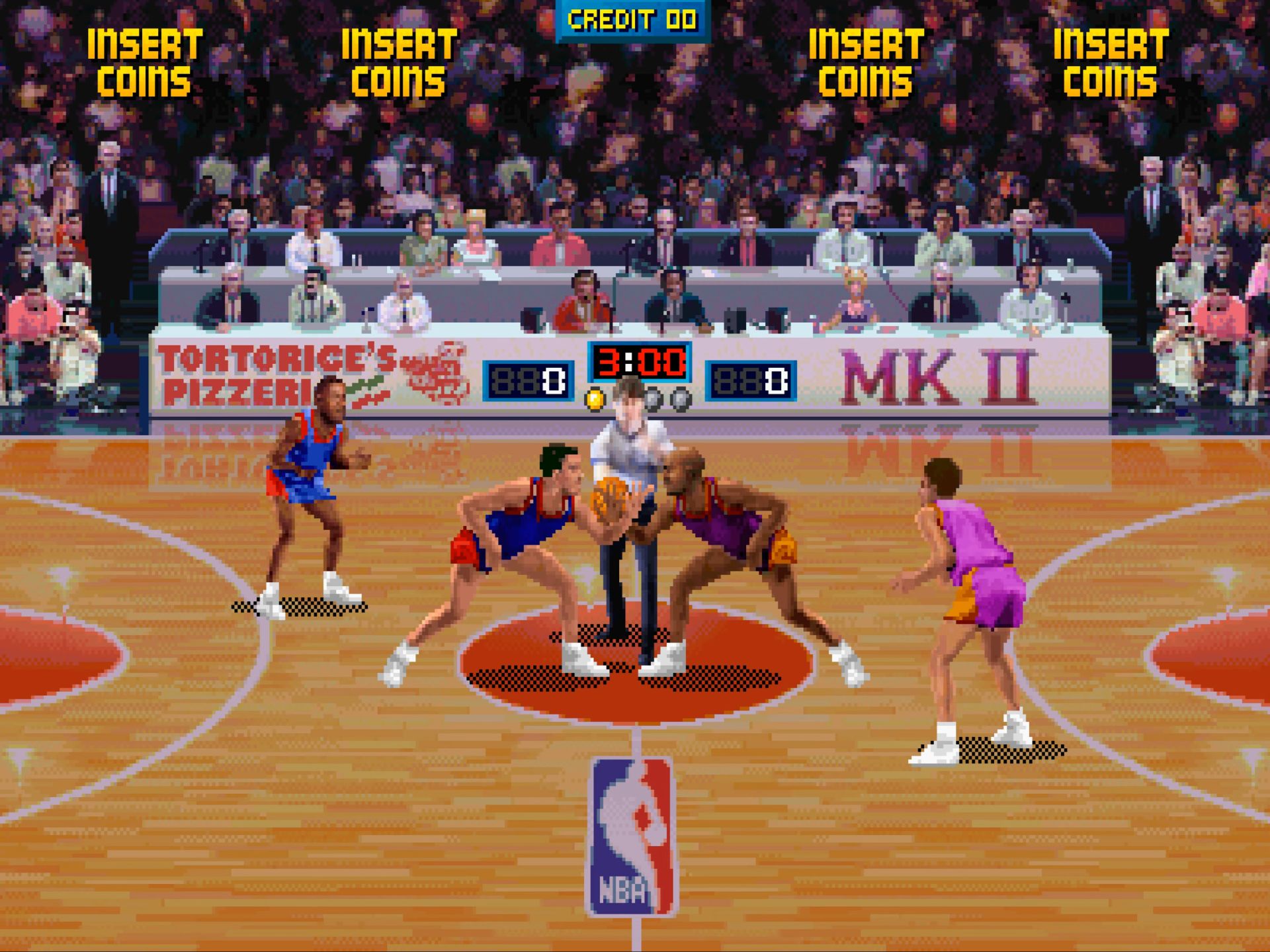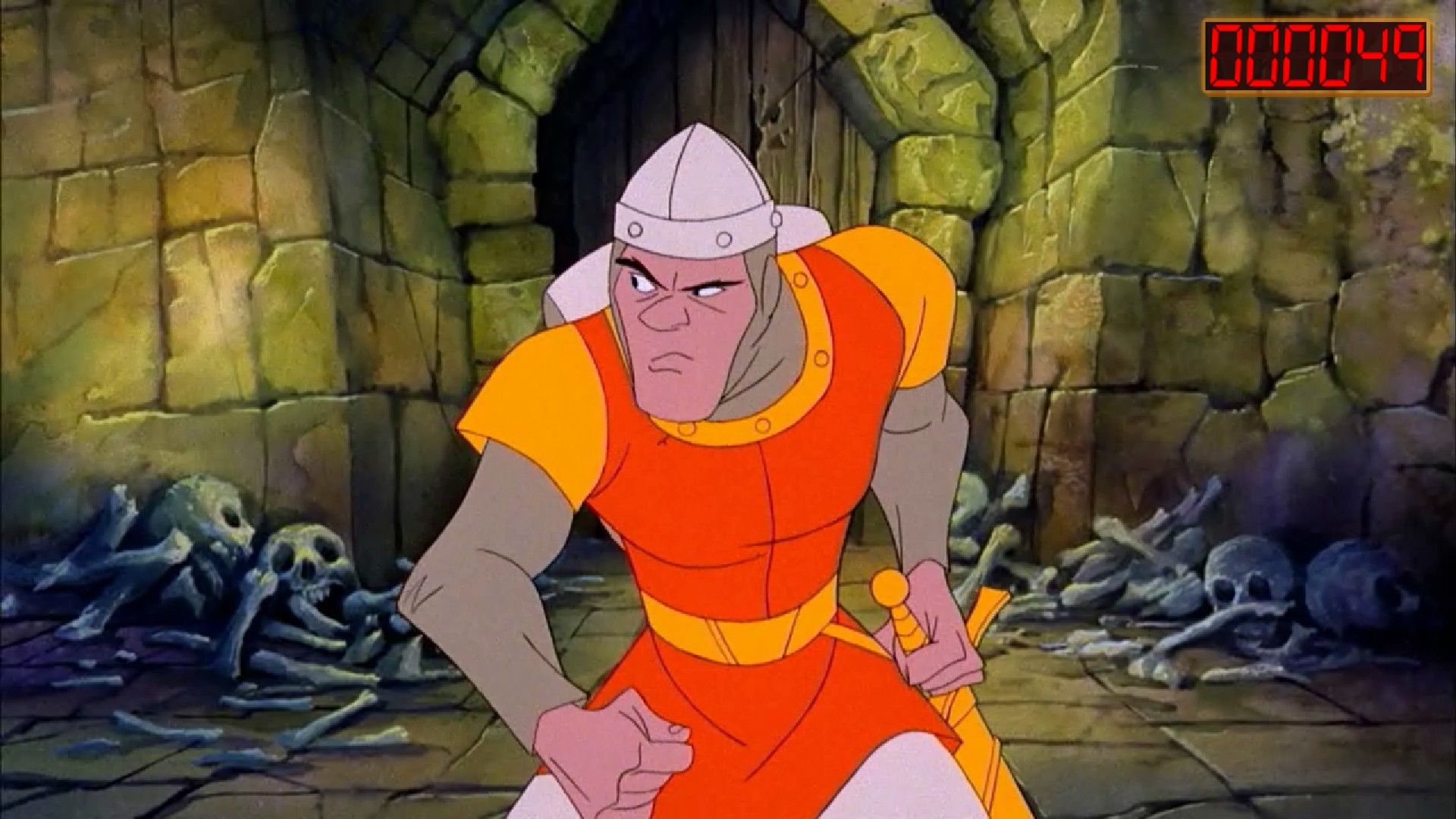Plenty of beloved arcade genres have experienced recent revivals. Unfortunately, not all of them have been so lucky, and many hit genres that disappeared after the death of arcades have remained dormant ever since.
From hardcore action games to quarter-munching classics, these iconic arcade genres are still awaiting a modern revival.
6
Maze Games
Although you’ve probably never heard of the “maze game” genre, there’s a good chance you have played at least one of its many iconic titles. As the name implies, maze games revolve around completing set objectives within maze-like stages. The genre began with competitive multiplayer games like Maze Craze and The Amazing Maze Game, both of which challenged players to race to the end of a maze. Other maze games like Blockade and Barricade pit you against another player as you both create walls with the goal of trapping your competitor in a dead end.
However, the genre is best known for its varied range of single-player titles, which are often centered around fighting or evading enemies that roam around each stage. Some of the most famous arcade games, such as Pac-Man, Dig-Dug, Gauntlet, and Bomberman, all fall under the maze game genre.
The simplicity of maze games proved to be a double-edged sword. Anybody could easily pick up and enjoy a maze game, and the satisfaction of earning a new high score kept many players hooked. However, maze games failed to stay relevant with the rise of console gaming, especially after adventure games like The Legend of Zelda and Final Fantasy sparked interest in sprawling open-worlds and engaging stories. Even when maze games were ported to home consoles, they lacked the competitive fun of battling to beat other players’ scores.
Some series like Bomberman and Pac-Man have stayed relevant through their constant stream of modern ports and new iterations that build upon their original premise. However, the maze game genre has largely been forgotten despite its monumental legacy.
5
Shoot ‘Em Ups
The shoot ’em up genre has a rich history containing dozens of gaming icons, ranging from early pioneers like Space Invaders and Galaga to cult-classics like Radiant Silvergun and RayStorm. Shoot ’em ups are fast-paced 2D action games that task players with shooting down waves of enemies across multiple stages, typically from a vertical or side-scrolling perspective.
The earliest shoot ’em ups were modeled after shooting galleries, with on-screen enemies lining up in rows for you to whittle through their forces. However, later releases like Xevious and 1942 shook up the genre. Instead of being confronted by a row of enemies in each level, later releases drop you into elaborately designed levels filled with unpredictable foes and super-sized boss fights.
Shoot ’em ups only became faster, tougher, and more exciting with each passing year, but the genre’s rapid evolution also proved to be its downfall. Whereas early releases like Space Invaders were loved by arcade-goers of all ages, later games alienated casual audiences with their intense difficulty and hardcore appeal. Furthermore, these later shoot ’em ups didn’t take long to complete. Die-hard shoot ’em up fans would replay these games to earn higher scores, but many players weren’t interested in returning for repeat playthroughs.
Apart from iconic classics like Space Invaders and Galaga, most shoot ’em up games vanished from arcades and have only recently reappeared in ports and remasters. However, their niche success gave rise to the bullet hell genre, which doubled down on the speed and intensity of old-school shoot ’em ups while also boasting deeper mechanics. Bullet hell games never matched the peak of their predecessor’s popularity, but their niche success has kept the genre active for decades.
4
Rail Shooters and Light Gun Games
Wolfenstein 3D and DOOM are often credited with laying the groundwork for 3D shooters, but the genre’s origins can be traced back even further to the rail shooters from the arcade era. Rail shooters are games that place you on a linear path and task you with shooting through hordes of enemies across a short campaign.
Early rail shooters like Space Harrier and After Burner share many similarities with shoot ’em ups, even featuring the same formula of blasting through waves of enemies until you reach a boss fight at the end of each stage. However, rail shooters set themselves apart with their pseudo-3D visuals, which enabled these games to feature third-person camera angles and simulate full 3D movement despite exclusively featuring 2D sprites.
Following the rise of first-person shooters and true 3D graphics, rail shooters underwent a drastic change. The genre gradually deviated from its shoot ’em up roots, swapping out the third-person perspective for a first-person camera and placing a heavier focus on creating semi-realistic shoot-outs. Rather than flying around the screen, games like Time Crisis and The House of the Dead use a start-and-stop pacing that regularly locks you in place while you fend off approaching enemies.
More importantly, these games turned rail shooters into the star attraction of many arcades with the addition of light guns. The pistol-shaped peripherals added even more tension and excitement to the already thrilling action of rail shooters. Needing to physically aim at enemies instead of using a joystick is challenging but satisfying to use, and it always makes perfecting a difficult level feel even more rewarding. Light gun games completely transformed rail shooters and became popular enough to be recognized as their own genre.
However, a technological limitation brought the massive success of light gun shooters to an early end. Light guns were designed in a way that could only function with cathode-ray tube (CRT) monitors. Unlike modern screens, CRTs output video by using cathode-ray tubes that draw each frame using an electron beam. However, the beam isn’t capable of creating an entire picture at once. Instead, it draws pictures in rows, moving line-by-line from the top to the bottom of the monitor until it has covered the entire screen. This process happens so fast that your eyes perceive the moving beam as a steady image.
Light gun peripherals contain a built-in light sensor capable of detecting the exact moment the electron beam reaches a specific point on the screen. The sensor calculates the amount of time it takes for the beam to reach your current position, which allows it to consistently track your aim. However, since modern televisions output the entirety of their on-screen picture simultaneously, there’s no way for the light gun’s sensor to determine where you’re currently aiming.
Recent attempts to revive the light gun genre have practically reinvented the peripheral for modern screens, albeit with mixed results. Games using motion controls or IR sensors are rarely as responsive as old-school light guns. Many recent arcade games use “positional light guns”—meaning they’re mounted onto the cabinet—but these are also severely limited compared to the original light gun technology. Some third-party peripherals like the Sinden Lightgun come close to the quality of older light guns, but their high price limits their appeal to only the most die-hard shooter fans.

Related
How Modern TVs Killed Light Gun Games
It’s game over for traditional light guns, but the genre still survives.
3
Arcade Sports Games
If there’s any gaming genre as popular and widely beloved as shooters, it has to be sports games. Sports games have one of the longest legacies in gaming, but they’ve also taken on numerous different forms. Before sports sims like Madden NFL and NBA 2K dominated console sales charts, the best sports games were located in arcades.
Arcade sports games trade realism for flashy fun, reimagining classic sports with simpler rules and faster matches. Games like NBA Jam boil basketball down to 2-on-2 matches wherein players don’t have to worry about fouls or the laws of physics as they perform super jumps into slam dunks. NFL Blitz features an equally fantastical depiction of football, adding a heavy dose of slapstick violence and neck-breaking speed to America’s favorite pastime.
Many arcade sports games also bring their own creative twist on classic sports. Super Mario Strikers and the many other Mario Sports games let you bring chaos to the field through power-ups, super moves, and stage hazards that add new challenges to the match. EA’s NBA Street and NFL Street series are slightly more faithful to their real-world sports, but also feature a variety of creatively bizarre side modes.
Unfortunately, arcade sports eventually began to decline for a few reasons. Series that characterized themselves with cartoonish violence or other harmful actions drew the ire of their sponsors. Midway—the studio behind NFL Blitz—was pressured by the National Football League (NFL) to remove content deemed too intense for the arcade release, and later entries suffered from even more restrictions until the series had scrubbed away most traces of its original identity.
Even series that weren’t as controversial struggled to maintain their success, as most arcade sports series were gradually abandoned in favor of realistic sports sims. This became even more common with the rise of HD consoles like the Xbox 360 and PlayStation 3, which enabled sports games to render virtual players and stadiums with lifelike detail. Sports sims were already immensely popular beforehand, but the increased graphical fidelity of HD consoles prompted a surge of these games, further spurred by the popularity of online multiplayer experiences during the seventh console generation.
With sports sims on the rise and arcade sports games forced to subdue their greatest strengths, it’s no surprise that sports sims have outlived their arcade-era equivalents. There have been multiple attempts at reviving the arcade sports genre, ranging from Midway’s M-rated Blitz: The League to more recent releases such as Mario Strikers: Battle League and NBA 2K Playgrounds. However, none of these games have ever come close to recapturing the unfettered absurdity and fast-paced fun that originally defined the genre.
2
Interactive Movie Games
Interactive movie games are one of gaming’s shortest-lived genres, yet their influence on modern games cannot be understated. Games in the interactive movie genre are mostly composed of full-motion video (FMV) cutscenes that prompt you to avoid obstacles and complete certain tasks by performing specific button inputs. By today’s standards, interactive movie games may seem like nothing more than a series of quick-time events, but they signified a massive leap forward for video game cinematics and storytelling.
The genre debuted with Dragon’s Lair, a fantasy-adventure game that sees players inhabiting the role of Dirk the Daring in his perilous journey to rescue a princess from a fearsome dragon. Along the way, you’ll need to avoid obstacles and battle monstrous foes by pressing the right buttons at the right time.
While it certainly doesn’t have the most original story, Dragon’s Lair brings its tale to life with beautifully animated cutscenes directed by acclaimed animator Don Bluth. Not only does Dragon’s Lair rival most theatrical animated films in terms of sheer visual quality, but its visuals were a mind-blowing first for arcade games—and they still hold up to this day.
Dragon’s Lair was immediately followed by a slew of similar interactive movie games. While the most notable examples—Dragon’s Lair II: Time Warp and Space Ace—were also directed by Don Bluth, the genre saw a few standout games from other creators. Many of these were produced by renowned anime studios, such as Toei Animation’s Ninja Hayate, Time Gal, and Road Blaster. Stern Electronic’s Cliff Hanger also uses anime cutscenes, though its footage was ripped directly out of pre-existing films from the Lupin III series, namely The Castle of Cagliostro and The Mystery of Mamo.
Interactive movie games were impressive for their time, but their flaws are apparent in the modern age. The gameplay is nothing more than a frustrating process of trial-and-error, and the lack of variation in cutscenes (besides death scenes) meant there was rarely any reason to replay these games. Of course, that’s assuming you’ll have the patience to beat them, as many of these games require you to memorize lengthy sequences and their numerous split-second inputs. Because of this, you’ll probably get more entertainment out of watching someone else play rather than experiencing these games for yourself.
Interactive movie games fared even worse on consoles. Besides ports for some of the aforementioned arcade games, most of the genre’s console releases use cheaply made live-action video rather than the film-quality animation of Don Bluth and Toei Animation. Some games like Night Trap and Mad Dog McCree attempted to blend interactive movie games with other genres, but even these boiled down to memorizing each scene rather than being able to immerse yourself in their gameplay.
Between their restrictive gameplay, limited replay value, and high development costs, interactive movie games weren’t profitable enough to last for long. Despite this, these games are still fondly remembered for both their presentation and the novelty of experiencing a truly playable movie. In recent years, narrative-driven adventure games like Telltale’s The Walking Dead and Quantic Dreams’s Detroit: Become Human built upon the concept of a playable movie by combining QTE-heavy cutscenes with meaningful dialogue choices and branching story paths.
1
Gaming Genres Can Bounce Back
Thankfully, many arcade gaming genres refuse to stay dead. For example, beat ’em ups and arcade racing games both disappeared for over a decade, but recent retro revivals fueled by passionate fans and talented indie developers have kept these genres alive while adding new classics to their vast libraries. There’s always a chance that your favorite dead genre will make a return, so hopefully some of these genres will one day receive a second chance.








